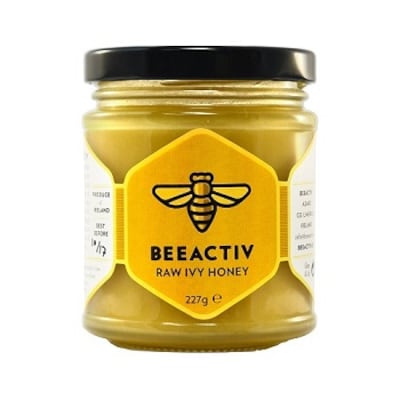Got a cough? Then before you pick up an over-the-counter medicine, or head to your GP, try a little honey. Who would have thought that in the 21st century this folk remedy would become the first line of treatment? But it has, at least in Britain, where proposed health guidelines say there is some evidence that honey can help improve cough symptoms.
This official thumbs-up for honey is a turn up for the books. These days the mere mention of "traditional medicine" or "home remedies" provokes knee-jerk howls of "Quackery!". Yet modern scientific research validating the age-old view that honey has medicinal properties is stacking up. There is data to show that honey helps relieve irritation in the mouth or throat by forming a protective film, and soothes coughs caused by upper respiratory tract infections and alleviates symptoms more than certain common over-the-counter medicines.
Honey has a number of other well-documented health benefits, including encouraging faster wound healing and shortening the life of cold sores. New Zealand manuka honey can even inhibit the growth of MRSA, enhance the effectiveness of antibiotics and reduce the risk of antibiotic resistance.
If you want to take advantage of honey's medicinal properties, what is the best type to eat? If you prefer your honey without wax, what you want is raw honey
So should we all get into honey? Its prodigious antibacterial, antifungal and antioxidant properties are attributed to the trace enzymes, minerals, B vitamins and amino acids that it contains. But although it typically also contains about 20 per cent water, the lion’s share of honey is sugar, mainly fructose and glucose. And aren’t we meant to be avoiding sugar in all its chameleon forms?
One of the interesting things about honey, even the blander types, is that it has a much more characterful, some would say obtrusive, taste than neutral table sugar (sucrose), and this makes it a self-limiting option for most. If I baked a sponge and “iced” it thickly with honey, I’d wager that very few people would be able to eat much of it. Top the same cake with sugary frosting and it would get eaten up much faster. It is actually difficult to overeat honey.
The pronounced scents and flavours of honey are one of the reasons why modern food manufacturers use it only in relatively small quantities. They tend to prefer glucose-fructose syrup, an industrial form of sugar, because it behaves more predictably in a factory than quirky honey and costs much less.
But if you want to take advantage of honey’s medicinal properties, what is the best type to eat? Honey that is still in the comb fits the bill, but if you prefer your honey without wax, what you want is “raw” honey: one that hasn’t been excessively heated or ultrafiltered to remove valuable “impurities”, such as traces of pollen and propolis, the resin from hives. This way it will retain its medicinally useful micronutrients.
Unfortunately, "raw" is a term with no precise legal meaning, and honey, just like olive oil, is notorious for food fraud. Both are arguments for buying your raw honey as close to home as possible from accountable sellers who are transparent about where their bees get their nectar – is it from organic, wild, urban or pesticide-treated land? – and who can provide chapter and verse on their extraction methods. If you read the label on the more ubiquitous honey brands, you will see that they generally contain an anonymous mix of honeys from countries in and outside the European Union, blended to give a "consistent", some might say dully sweet, taste.
If you have ever fallen in love with a fragrant, runny honey abroad and brought it home only to find that it solidifies in cool British temperatures, this doesn’t mean your honey has gone off. Honey’s shelf life is eternal – ancient Egyptians used it as embalming fluid – but all types of honey crystallise eventually. That said, commercial honeys obtained through higher heat treatment and fine filtering do remain runny for longer. Raw honey, on the other hand, tends to crystallise faster because the minute particles of pollen, propolis and wax encourage crystals to form. Moving the jar to a warm place or sitting it in warm water will restore raw honey to its liquid form without killing off its medicinal benefits.

There is a dazzling diversity of good raw honeys out there. As a general guide, chestnut and pine honeys have the strongest scents and flavours, heather sits somewhere in the middle, and acacia and clover come in at the milder end of the spectrum. Twelve honeys were awarded the top three-star rating in the 2018 Great Taste awards. These included BeeActiv ivy-flower honey from Limerick; pine and Smilax aspera (a flowering vine) honey from the Greek village of Agia Paraskevi; multifloral honey from Exmoor, in southwestern England; a honey from rooftop hives and gardens in central London; and heather honey from high Peak District moorland. Judges tried to put words to the remarkable range of perfumes and tastes: "smoky and treacly" (honey from a Rwandan forest); "sharp, clean, almost grapefruit" (London honey); "earthy liquorice notes" (organic Greek chestnut honey); "evocative of walks in tropical woodlands" (Zambian forest honey from bark hives).
Shops and market stalls selling good raw honey usually encourage you to sample, so it is fun to work out your favourite. Raw honey is never cheap, but then a small spoonful of such a precious natural commodity goes a long way – especially, it seems, on a miserable winter night when you can’t stop coughing. – Guardian




















